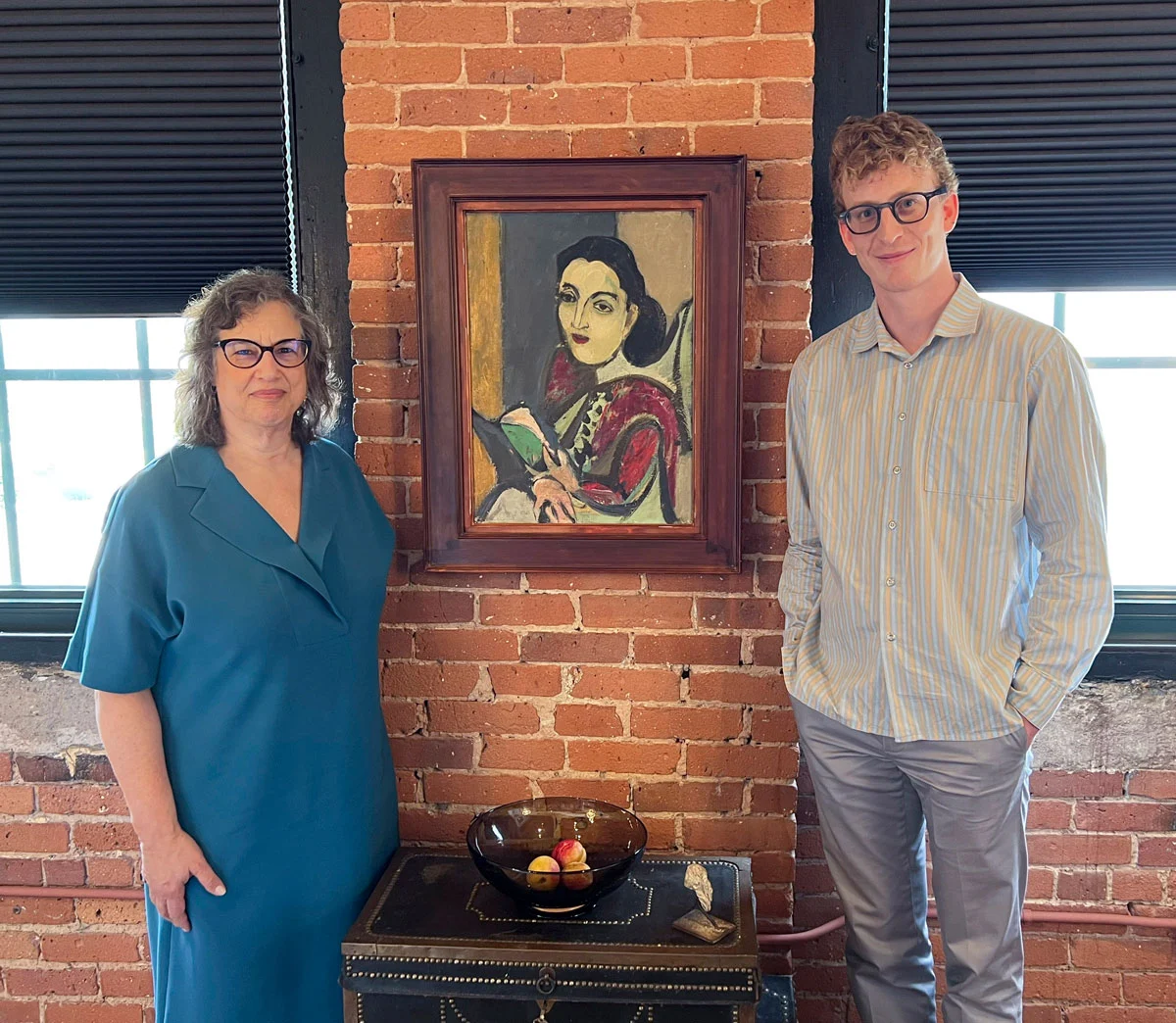Rosina Rubin has habitually imagined where Arshile Gorky’s 1937 portrait of her aunt, artist Anna Walinska, ended up. Perhaps the canvas wound up in Europe after Walinska begrudgingly sold it in the 1970s to raise funds for an artist co-op. New York, where Walinska was based from the 1930s until her death in 1997, or anywhere on the East Coast seemed even less likely, according to modern art experts who might have a lead, Rubin said.
“It seemed like it was somewhere out there in the vast universe—far, far away,” lamented Rubin, founder of Atelier Anna Walinska which documents and promotes exhibitions of the modernist paintings, collages, and drawings created by her aunt. With the hope that someone online might recognize the painting of the artist reading a book, Rubin even made it her profile picture on Instagram. After more than a decade, the search led nowhere, and she lost hope.
 Then in early 2020, Rubin teamed up with the Arshile Gorky Foundation, which was about to launch a digital catalogue raisonné for the Armenian American artist known for creating energetic abstract paintings. At the time, the whereabouts of around 170 Gorky artworks were unknown, and finding the Walinska portrait was a priority, especially because Walinska was also a gallerist who gave Gorky his first New York show in 1935. The foundation made a “HAVE YOU SEEN THIS PAINTING?” ad for the work using a faded slide kept in Walinska’s records, and began circulating the flyer at art fairs, with the hope that new leads would lead to its rediscovery.
Then in early 2020, Rubin teamed up with the Arshile Gorky Foundation, which was about to launch a digital catalogue raisonné for the Armenian American artist known for creating energetic abstract paintings. At the time, the whereabouts of around 170 Gorky artworks were unknown, and finding the Walinska portrait was a priority, especially because Walinska was also a gallerist who gave Gorky his first New York show in 1935. The foundation made a “HAVE YOU SEEN THIS PAINTING?” ad for the work using a faded slide kept in Walinska’s records, and began circulating the flyer at art fairs, with the hope that new leads would lead to its rediscovery.
Despite the pandemic bringing art fairs to a screeching halt, Rubin decided to keep momentum going by creating an email newsletter about the portrait, a charming surprise that landed in my inbox during lockdown. I contacted Rubin to learn more about the story of this long-lost Gorky portrait of Walinska, which resulted in an article, published by Hyperallergic, that brought renewed interest in Walinska, especially for people previously unfamiliar with the artist, who studied modernism in Paris before returning to New York and creating expressive abstract canvases.
Still, a month went by, then a year. Two years and nothing. “It felt like, okay, we’re just not going to find it,” Rubin said in a recent interview. “Nobody saw it. Or if somebody saw it, they just don’t want us to know—and that’s it.”
But that wasn’t it. A few months ago, the owner of the painting, who wishes to remain anonymous, contacted the Gorky Foundation. The foundation’s director, Parker Field, called Rubin right away. “You found the painting,” she recalled having guessed when she answered the phone; Field replied, “The painting found us.”


